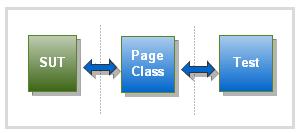Page Object pattern
BlueDuck SDA has native support for Page Object Pattern.
The Page Object pattern represents the screens on your System Under Test (SUT) as a series of objects.
The idea of a page object model is that each screen in the SUT has a page class. These page classes expose elements through properties and actions through methods. The result makes it much easier to create new tests and to maintain your test code when changes happen to your SUT.

BlueDuck SDA uses AutoItObject. AutoItObject is an combination of a DLL and UDFs adds extended Object-support to AutoIt. Now it is possible to use an OOP-like syntax in your scripts and access many COM-Interfaces exposed from the Windows-API.
